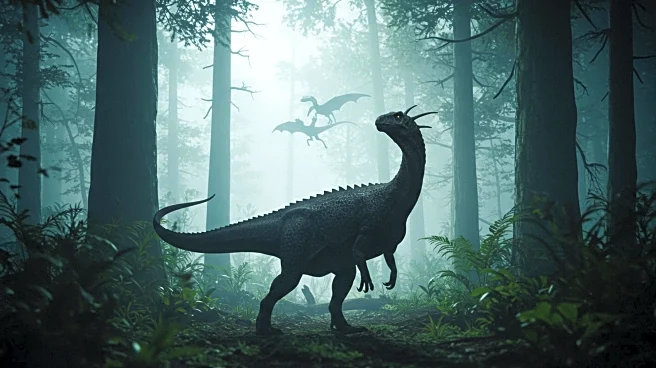Rapid Read • 7 min read
Researchers have identified a new dinosaur species, Khankhuuluu mongoliensis, which provides insight into the evolutionary history of tyrannosaurs. This species, discovered from fossils in Mongolia's Gobi Desert, is considered a transitional form between earlier tyrannosauroid species and the massive apex predators like Tyrannosaurus rex. The study, published in Nature, suggests that multiple migrations between Asia and North America allowed tyrannosauroids to diversify and grow in size during the late Cretaceous Period. The discovery has led scientists to reevaluate the tyrannosaur family tree, clarifying relationships among various species.
AD
The discovery of Khankhuuluu mongoliensis is significant as it fills a gap in the fossil record, offering new insights into the evolutionary path of tyrannosaurs. Understanding these migrations and evolutionary changes can help scientists better comprehend how these dinosaurs became dominant predators. This research highlights the importance of Asia in the evolutionary success of tyrannosaurs and underscores the role of migration in shaping the family tree of these iconic dinosaurs. The findings may also influence future paleontological studies and the interpretation of dinosaur evolution.
Further research is expected to focus on additional fossil records to provide more clarity on the evolutionary history of tyrannosaurs. Scientists may continue to reexamine previously collected fossils to uncover more details about the diversity and evolution of these species. The study opens up new avenues for exploring how environmental factors and migrations influenced the development of large predators during the Cretaceous Period.
The discovery of Khankhuuluu mongoliensis not only reshapes the understanding of tyrannosaur evolution but also highlights the importance of revisiting historical specimens. This approach can lead to significant breakthroughs in paleontology, as demonstrated by the new insights gained from fossils collected decades ago. The study also emphasizes the interconnectedness of continents in the evolutionary history of species, drawing parallels to human migration and family histories.
AD
More Stories You Might Enjoy











